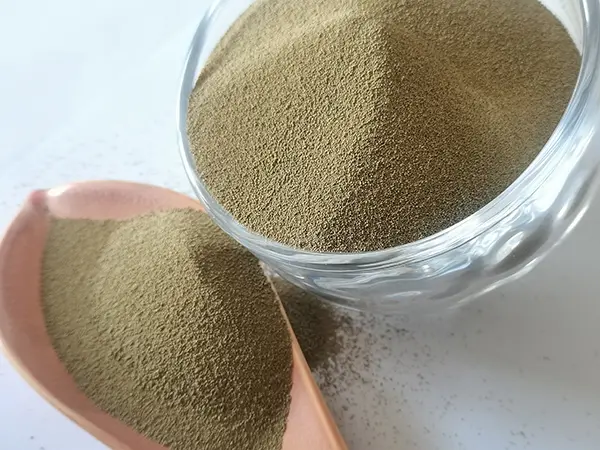Ceramsite An Innovative Material for Sustainable Construction
In the quest for sustainable building materials, ceramsite has emerged as a groundbreaking solution that not only enhances the structural integrity of constructions but also aids in environmental preservation. Ceramsite, a lightweight aggregate derived from clay or other natural materials, is produced through a process of sintering at high temperatures. This innovative material has garnered attention in the fields of construction and landscaping due to its numerous beneficial properties.
One of the primary advantages of ceramsite is its lightweight nature. Compared to traditional aggregates, ceramsite is significantly lighter, which can reduce the overall weight of concrete and, in turn, lessen the load on foundations. This characteristic is especially beneficial in the construction of high-rise buildings, where every kilogram counts. By incorporating ceramsite into building materials, architects and engineers can achieve greater heights in structural design without compromising safety or stability.
In addition to being lightweight, ceramsite possesses remarkable thermal insulation properties. It has a low thermal conductivity, meaning it helps maintain a more stable indoor temperature without the excessive use of heating or cooling systems. This not only contributes to energy efficiency but also results in lower utility bills for occupants. As energy costs continue to rise, materials like ceramsite that promote energy savings are increasingly sought after.
Ceramsite is also highly resistant to moisture and chemical attacks, making it an excellent choice for various applications. It can be used in both exterior and interior construction, ensuring durability even in harsh environmental conditions. Its resistance to weathering, frost, and chemical deterioration makes it ideal for landscaping purposes, such as in green roofs or drainage systems. By allowing for better water management, ceramsite can help mitigate flooding and improve urban sustainability.
ceramsite

Another noteworthy aspect of ceramsite is its eco-friendliness. The production process typically utilizes industrial waste materials, such as fly ash or slag, which contributes to waste reduction and promotes recycling. Furthermore, ceramsite can improve the sustainability of concrete structures by reducing the amount of cement required, thus lowering carbon emissions associated with cement production—a significant contributor to global greenhouse gas emissions. Utilizing ceramsite helps in aligning the construction industry with the principles of a circular economy.
The versatility of ceramsite extends beyond its use in concrete. In horticulture, ceramsite is employed as a growing medium, offering excellent aeration and drainage for plants. Its lightweight structure allows for easy handling and reduces the overall weight of potted plants, making it ideal for urban gardening and container planting. Moreover, ceramsite's porous nature enables the retention of moisture while facilitating proper air circulation to the roots, fostering healthier plant growth.
As cities around the world grapple with challenges related to urbanization and climate change, materials like ceramsite are becoming increasingly vital. The growing trend towards sustainability in construction practices underscores the importance of innovative materials that minimize environmental impact while enhancing performance. With its lightweight, insulating properties, and resistance to moisture and chemicals, ceramsite stands out as a star player in the future of sustainable construction.
In conclusion, ceramsite represents more than just a building material; it embodies a holistic approach to sustainable construction that prioritizes energy efficiency, durability, and ecological responsibility. As the world shifts towards greener practices, integrating ceramsite into building designs can play a pivotal role in crafting a sustainable and resilient future for our urban landscapes. The continuous research and development of ceramsite applications will undoubtedly lead to even more innovative solutions that further cement its place in the modern construction landscape.
Post time:พ.ย. . 21, 2024 01:44
Next:ceramic sand
